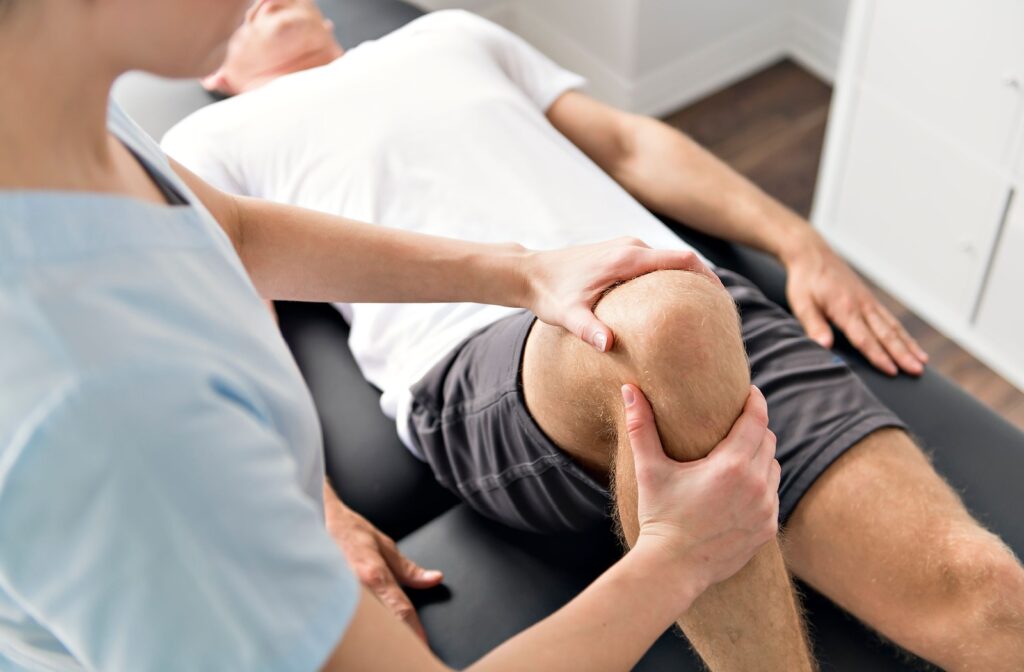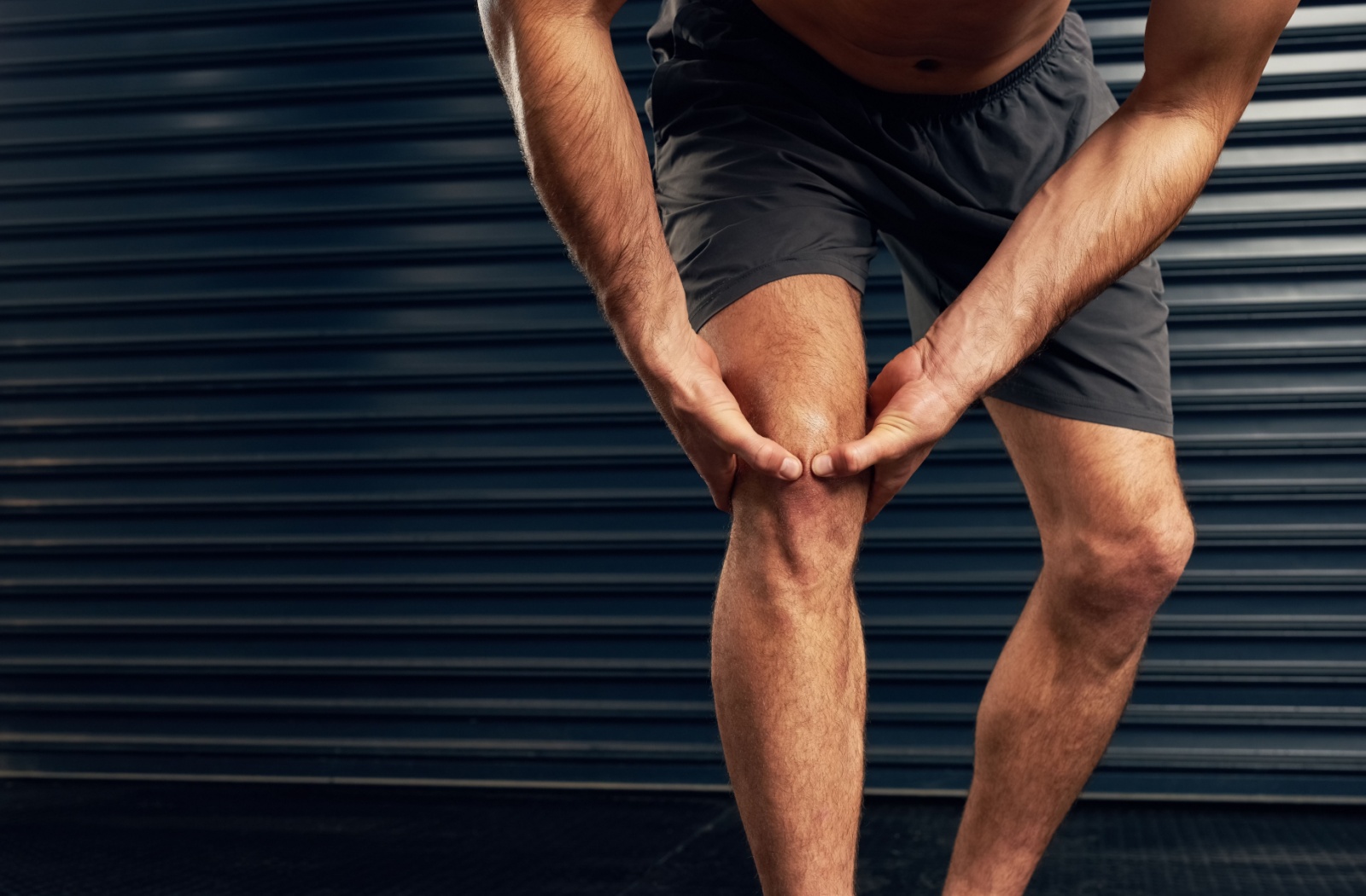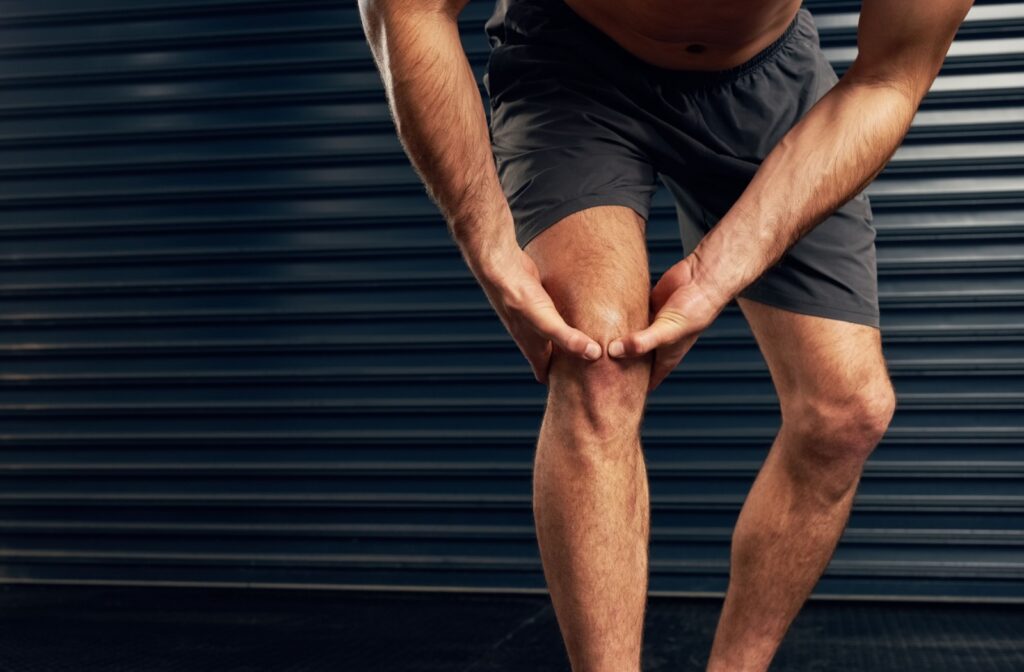Tearing your ACL is one of the most common and frustrating injuries for active people. It often happens in a split second during a pivot, landing, or awkward movement. But what many people don’t realize is that ACL tears are often preventable.
By building strength in the right places, training smarter movement patterns, and recovering properly, you can help reduce your risk of an ACL injury. From recreational sports to everyday activity, simple, evidence-based strategies can go a long way in supporting long-term knee health.
Understanding ACL Injuries & Risk Factors
Before diving into prevention strategies, it’s helpful to understand what puts you at risk for an ACL injury. Several common contributing factors include:
Biomechanical Factors
Poor movement patterns significantly increase ACL injury risk. When you land from a jump with your knees collapsing inward, you place enormous stress on the ACL. Similarly, landing with straight legs or poor hip control creates dangerous forces that can overwhelm the ligament.
Muscle Imbalances
Weak glutes, tight hip flexors, and imbalanced quadriceps-to-hamstring strength ratios all contribute to ACL vulnerability. These imbalances alter how forces are distributed across your knee joint during movement.
Sport-Specific Risks
Activities involving sudden direction changes, pivoting, and jumping carry higher ACL injury rates. Soccer, basketball, skiing, and football are particularly high-risk sports. Female athletes face two to ten times higher ACL injury rates than males due to anatomical, hormonal, and biomechanical differences.
Physiotherapy Strategies for ACL Prevention
Physiotherapy plays an important role in ACL injury prevention by addressing the underlying factors that contribute to knee vulnerability. Professional physiotherapists can identify subtle movement dysfunctions that might otherwise go unnoticed.
Movement Assessment & Correction
A comprehensive physiotherapy assessment examines how you move during functional activities. We’ll evaluate your squat pattern, single-leg balance, jumping mechanics, and cutting movements. This assessment reveals specific areas requiring intervention.
Common movement faults include:
- Excessive knee valgus during landing
- Poor hip control during single-leg activities
- Inadequate trunk stability
- Ankle mobility restrictions affecting knee positioning
Targeted Strengthening Programs
Research consistently shows that strengthening key muscle groups helps reduce ACL injury risk. Your physiotherapy program might emphasize:
- Hip strengthening: Strong glutes and hip muscles provide essential stability during dynamic movements. Exercises like clamshells, side-lying hip abduction, and single-leg bridges can target these stabilisers.
- Hamstring development: Balanced quadriceps-to-hamstring strength ratios help protect the ACL. Nordic hamstring curls and eccentric hamstring strengthening are also known to be effective.
- Core stability: A strong core provides the foundation for all lower limb movements. Planks, dead bugs, and anti-rotation or other exercises can build the stability needed for safe movement patterns.

Practical Exercises to Prevent ACL Injuries
Certain exercises can reduce your risk of ACL injury if performed consistently as part of a regular training routine.
Neuromuscular Training
Balance and proprioception exercises help your nervous system respond quickly to potentially dangerous positions. Single-leg stands on unstable surfaces, balance board training, and reaction drills all contribute to improved neuromuscular control.
Plyometric Progression
Jumping and landing exercises teach proper mechanics while building power with proper guidance. Start with basic two-foot jumps, focusing on soft landings with bent knees. Progress to single-leg hops and multi-directional movements as your technique improves.
Key Landing Cues:
- Land with bent knees and hips
- Keep knees aligned over toes
- Engage core muscles before landing
- Control the landing—do not just absorb impact
Agility & Cutting Drills
Sport-specific movements should be practiced with proper technique. Focus on decelerating properly before changing direction, maintain good posture during cuts, and keep your knees aligned during pivoting movements.
Integrating Prevention Into Your Training
ACL injury prevention shouldn’t be an afterthought—it needs to be woven into your regular training routine. The most effective programs often integrate prevention exercises into warm-ups, cool-downs, and strength training sessions.
Pre-Activity Preparation
Every training session or game should begin with a comprehensive warm-up addressing ACL injury prevention. This might include dynamic stretching, activation exercises for key muscle groups, and movement preparation drills.
Ongoing Assessment
Regular movement screening helps identify when your technique is insufficient or when new imbalances in your muscles develop.
The Power of Prehabilitation
Prehabilitation represents a proactive approach to injury prevention. Rather than waiting for problems to develop, prehabilitation focuses on identifying and addressing potential issues before they become injuries.
What Makes Prehabilitation Effective
At Recovery Lab, we understand that functional recovery is key to staying active and injury-free. Prehabilitation programs target specific movement patterns, strength deficits, and flexibility limitations that contribute to injury risk.
Effective prehabilitation involves:
- Movement screening to identify faulty patterns
- Targeted strengthening exercises
- Flexibility and mobility work
- Sport-specific training modifications
- Education about proper technique
Building Your Foundation
Many successful ACL injury prevention programs begin with establishing proper movement foundations. This means learning to squat, lunge, and land correctly before progressing to sport-specific movements.
The Role of Recovery in Injury Prevention
Preventing ACL injuries isn’t about luck, but about making smart, consistent choices. A combination of prehabilitation, physiotherapy, and targeted training can reduce your risk and support long-term knee health. Whether you’re highly active or just want to stay mobile, a small investment in prevention now can save you months of rehabilitation later. At Recovery Lab, we help identify risk factors and build personalized programs that keep you strong, stable, and injury-free. Don’t hesitate to book an appointment today.



